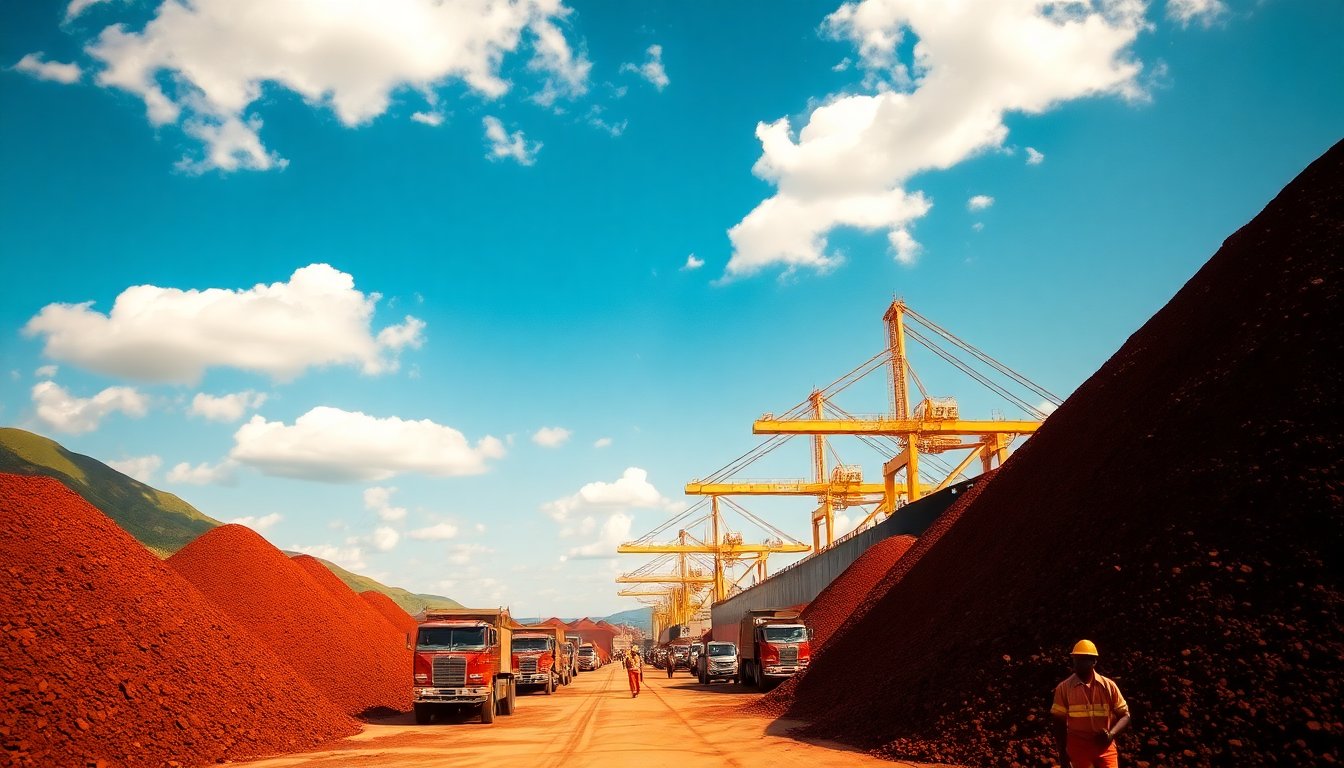Table of Contents
The long-awaited launch of the Simandou iron ore project in Guinea marks a pivotal moment for both the nation and the global mining industry. Valued at approximately US$20 billion, this monumental project has been in development for nearly thirty years. The inaugural shipment of iron ore from the Morebeya port on November 11 signifies a new era in iron ore production and distribution.
By focusing on high-grade ore, the Simandou project is poised to significantly impact the iron ore sector, particularly as the world shifts toward more sustainable practices in steel manufacturing. This initiative is expected to provide a substantial boost to Guinea’s economy and alter traditional dynamics within global iron ore supply chains.
The significance of the Simandou project
The project represents the largest untapped source of high-grade iron ore globally, presenting a transformative opportunity for stakeholders in mining and steel production. The first shipment, carrying over 9,850 tons of iron ore, highlights not only a technological and operational achievement but also the collaborative efforts of various international and regional players, including executives from companies like Australia’s Rio Tinto and China’s Aluminum Corp.
Geopolitical implications
The Simandou project has drawn significant geopolitical interest, particularly regarding China’s strategic investments in the region. Vice Premier Liu Guozhong led a delegation to Guinea to witness this historic event, underscoring China’s commitment to securing essential resources for its steel industry. This partnership reflects a growing trend of resource nationalism, where countries aim to maximize the benefits of their national assets.
Amid this backdrop, the Guinean government, under President Mamady Doumbouya, emphasizes ensuring that the country’s resources yield maximum benefits for its citizens. The government maintains a 15% stake in the infrastructure operations, aimed at enhancing local content and promoting economic growth.
Market dynamics and future outlook
As operations commence, the project is projected to reach a full production capacity of 120 million metric tonnes per annum in the coming years. Initial market reactions suggest potential short-term price stability; however, analysts predict a long-term downward trend in iron ore prices due to the influx of high-grade ore entering a market already experiencing demand fluctuations.
Impact on global supply chains
The introduction of Simandou into the global market is expected to disrupt traditional supply chains, particularly affecting established players such as BHP and Vale. These companies, known for their lower-grade outputs, may face increased competition as the premium quality of Simandou ore becomes preferred among steel producers focused on decarbonization efforts and operational efficiency.
Furthermore, the project is anticipated to create a ripple effect across the mining and shipping sectors. Companies operating in logistics, especially those managing Capesize and Newcastlemax vessels, may experience increased demand due to the extended transport routes from West Africa to Asia, thereby enhancing the overall shipping market.
Long-term implications for sustainability
At the core of the Simandou project is a commitment to sustainable practices within the steel production industry. The premium quality of Simandou’s iron ore, with an iron content of 65-67% Fe, positions it as a critical resource for low-carbon steelmaking technologies, including hydrogen-based direct reduced iron (H2-DRI) production.
As countries aim to meet environmental goals and reduce carbon footprints, Simandou’s high-grade ore is likely to attract significant interest from steelmakers pursuing greener production methods. This shift reinforces Guinea’s status as a key supplier and aligns with the global movement toward sustainability.
By focusing on high-grade ore, the Simandou project is poised to significantly impact the iron ore sector, particularly as the world shifts toward more sustainable practices in steel manufacturing. This initiative is expected to provide a substantial boost to Guinea’s economy and alter traditional dynamics within global iron ore supply chains.0
By focusing on high-grade ore, the Simandou project is poised to significantly impact the iron ore sector, particularly as the world shifts toward more sustainable practices in steel manufacturing. This initiative is expected to provide a substantial boost to Guinea’s economy and alter traditional dynamics within global iron ore supply chains.1


